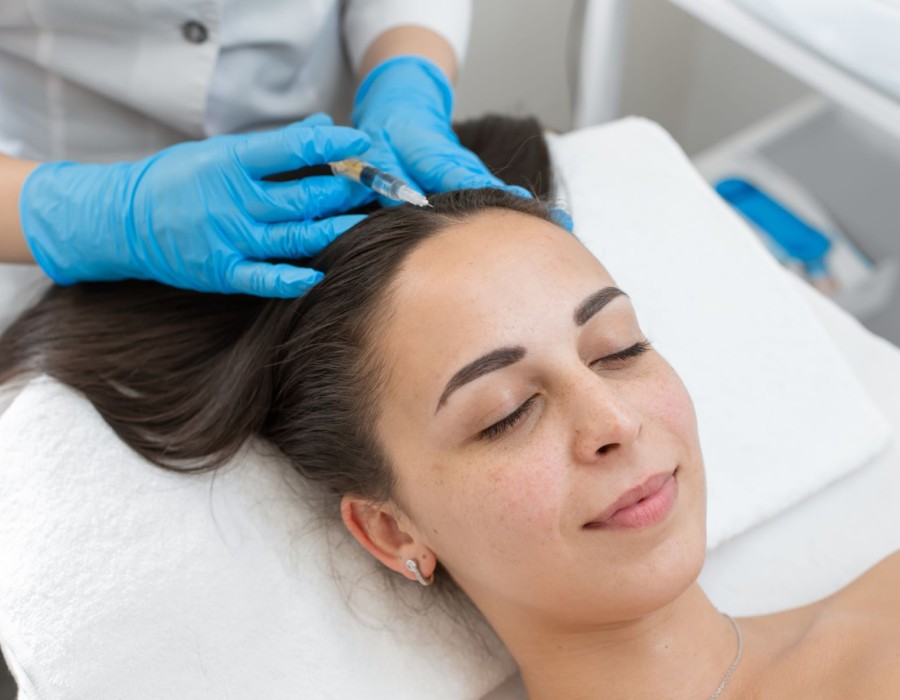Hair loss is a common concern affecting millions of individuals worldwide. Whether due to genetics, hormonal changes, stress, or medical conditions, hair thinning and baldness can significantly impact self-esteem and confidence. With advancements in medical science, various treatment options have emerged to address this issue. Among them, Platelet-Rich Plasma (PRP) therapy has gained immense popularity as a non-surgical solution. But is PRP hair treatment the best non-surgical option available? Let’s explore its efficacy, benefits, and how it compares to other treatments.
Many individuals seek PRP hair treatment due to its promising results and natural approach. Those considering PRP Hair Treatment in Dubai or any other location often look for a safe, effective, and minimally invasive procedure to combat hair loss.
Understanding PRP Hair Treatment
PRP hair treatment is a regenerative therapy that uses the patient’s own blood to stimulate hair growth. The procedure involves drawing a small amount of blood, processing it in a centrifuge to concentrate the platelets, and then injecting the platelet-rich plasma into the scalp. The platelets contain growth factors that promote tissue repair, healing, and hair follicle regeneration.
How PRP Hair Treatment Works
The process of PRP therapy consists of three main steps:
Blood Collection: A small sample of blood is drawn from the patient, usually from the arm.
Centrifugation: The blood is spun in a centrifuge to separate its components, concentrating the platelets and growth factors.
Injection into the Scalp: The PRP is injected into areas of the scalp experiencing hair thinning or baldness, stimulating dormant hair follicles.
The entire procedure typically takes about an hour and does not require downtime, making it a convenient option for individuals with busy lifestyles.
Benefits of PRP Hair Treatment
PRP therapy has several advantages that make it a preferred choice for hair restoration:
Natural and Safe – Since PRP is derived from the patient’s own blood, there is minimal risk of allergic reactions or infections.
Non-Surgical and Minimally Invasive – Unlike hair transplant surgery, PRP does not involve incisions, sutures, or significant recovery time.
Stimulates Natural Hair Growth – PRP enhances hair follicle activity, leading to thicker and healthier hair over time.
Improves Hair Density and Strength – Regular sessions can improve the quality and volume of existing hair.
Quick and Convenient – The procedure is relatively quick, allowing individuals to resume normal activities immediately.
Potential for Long-Term Benefits – With maintenance sessions, PRP can offer prolonged improvements in hair health and growth.
How PRP Compares to Other Non-Surgical Treatments
While PRP hair treatment is highly effective, it is essential to compare it with other non-surgical alternatives to determine its superiority.
Medications (Minoxidil and Finasteride)
- Minoxidil (Rogaine): A topical solution that stimulates hair growth by increasing blood flow to the scalp. While effective, results vary, and continuous use is required to maintain hair growth.
- Finasteride (Propecia): An oral medication that inhibits the hormone DHT, a leading cause of hair loss. It is effective but may have side effects such as decreased libido.
- Comparison to PRP: Unlike medications, PRP does not involve daily applications or systemic side effects. It works naturally without altering hormonal levels.
Low-Level Laser Therapy (LLLT)
- LLLT devices use laser energy to stimulate hair follicles and improve hair density.
- It is painless, FDA-approved, and can be used at home.
- Comparison to PRP: While LLLT enhances hair growth, its effectiveness is generally slower and less dramatic than PRP. PRP delivers targeted stimulation directly to affected areas.
Scalp Micropigmentation (SMP)
- SMP is a cosmetic tattooing technique that creates the illusion of fuller hair.
- It does not stimulate hair growth but provides a visual improvement.
- Comparison to PRP: PRP offers biological restoration, while SMP is purely aesthetic. Those seeking natural hair regrowth will benefit more from PRP.
Hair Growth Supplements and Natural Remedies
- Supplements like biotin, saw palmetto, and collagen promote hair health but do not directly address hair loss causes.
- Essential oils and scalp massages may improve circulation but have limited scientific backing for significant regrowth.
- Comparison to PRP: PRP provides a scientifically proven method for stimulating hair follicles, making it more effective than general supplements and home remedies.
Who is an Ideal Candidate for PRP Hair Treatment?
PRP therapy is suitable for individuals experiencing:
- Early-stage hair loss
- Androgenetic alopecia (pattern baldness)
- Thinning hair due to stress or hormonal imbalances
- Post-pregnancy hair shedding
However, PRP may be less effective for individuals with complete baldness or severe follicular damage. Consulting a specialist can help determine the suitability of the treatment.
How Many Sessions Are Required?
PRP hair treatment is not a one-time procedure. Typically, a series of three to four sessions spaced four to six weeks apart is recommended for optimal results. Maintenance sessions every six to twelve months help sustain hair growth and prevent further loss.
The Verdict:
PRP hair treatment stands out as one of the most effective non-surgical solutions for hair restoration. Its ability to naturally stimulate hair growth, combined with its safety and convenience, makes it an appealing choice for many individuals. While other treatments like medications, LLLT, and supplements offer benefits, PRP provides a direct and scientifically-backed approach to hair regrowth.






Comments